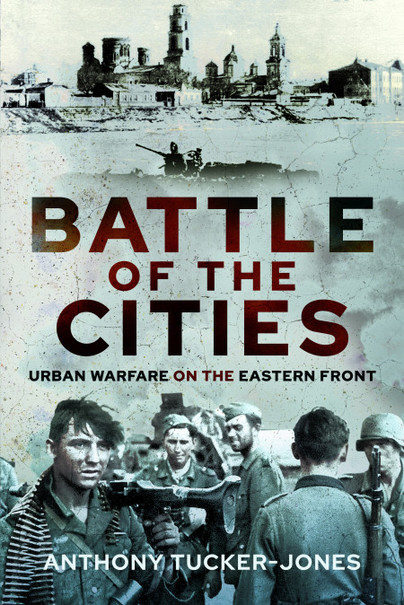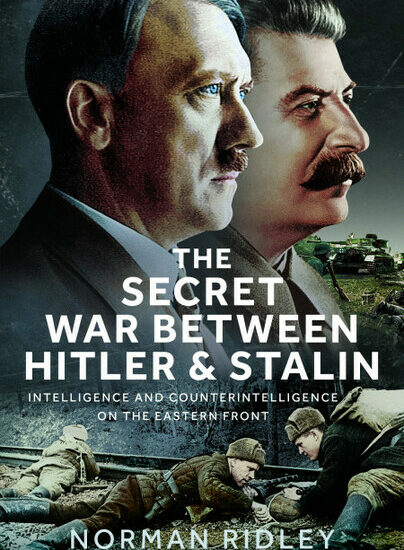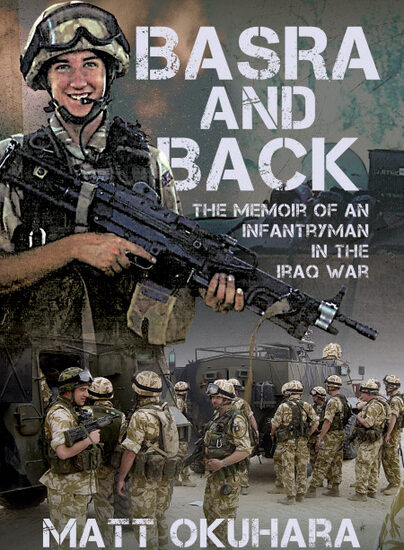World Book Day – Anthony Tucker-Jones
Read on to discover the writing process behind the upcoming release from Anthony Tucker-Jones.
What inspired you to write it?
I have a long fascination with the fighting on the Eastern Front during the Second World War – it is really where the Second World War was won in Europe. However, in terms of military campaigns, it is always overshadowed by perennial interest in North Africa, Italy and Normandy. I have written several books examining different aspects of the Eastern Front so was looking for a new approach, hence tackling the fighting from the perspective of the major cities. I had this eureka moment when it occurred to me how the key battles for Moscow, Leningrad and Stalingrad fatally skewed German strategy. Adolf Hitler foolishly dissipated his forces trying to capture these cities; Baku and Grozny are another fine example of this. He just did not know what his goal was and gave up on taking Moscow, the political heart of the Soviet Union. Instead, he went chasing after raw materials. This got me to thinking what impact had the battles for the other cities in the Soviet Union and indeed Eastern Europe had. To the best of my knowledge this has not been done before.
What interesting facts have you uncovered during your research?
Where do I start! Certainly, the ferocity of the fighting was an eye opener as was the differing roles the cities played. For example, few people are aware that the war did not end with the battle for Berlin but rather the battle for Prague, where German Army Group Centre refused to give up. It did not surrender until German personnel had been dramatically rescued from the city. Furthermore, there are certain similarities in urban warfare, i.e., most major cities are built on rivers and the attackers always must secure certain infrastructure in order to overcome the defenders. This is usually the bridges, telephone exchanges, radio and railway stations, government buildings etc. These always become the focus of bitter fighting.
What was the hardest part about writing this book?
Well, I am tempted to be flippant and say the tyranny of the word count! The bane of most writers’ lives. Honestly though probably one of the hardest parts was distilling everything into a reasonably sized and readily digestible book. It was quite hard deciding which cities to leave out, there were a lot that could have been included, particularly in the Baltic states, but the key was to keep the narrative focused. It was also a challenge to keep the chapters roughly the same size, obviously there was a temptation to run with certain cities to the detriment of others.
Is there a unique angle to this book and if so, what is it?
Undoubtedly telling the story of the war on the Eastern Front through the battle of the cities. There have been numerous books on the fighting for individual cities, especially Moscow, Leningrad, Stalingrad and Berlin, but none that looked at them collectively. This book covers a total of eighteen cities spread across the Soviet Union, Poland, Hungary, Austria and Czechoslovakia, though two feature twice for reasons that will be apparent! It puts each in context of the overall conflict. I think readers will appreciate the chronological approach, which helps make sense of it all.
What has researching this book taught you?
There is still an awful lot I don’t know about the Eastern Front. While Moscow, Leningrad, Stalingrad and Kursk are well known, the fighting in the Caucasus for example is greatly neglected as is the German conquest of Crimea to a lesser extent. Also, street fighting is a very dirty business. If a garrison refuses to retreat or surrender there is no easy way to clear a city other than by house-to-house. This inevitably means heavy casualties on both sides. Some of the most tragic battles were fought on the streets of Stalingrad, Budapest, Warsaw and Konigsberg. One of the most remarkable was for Breslau. Unlike Konigsberg the German garrison held out until the very end of the war. In terms of the Soviet cities few realise the significance of the liberation of Minsk in 1944, this was part of Stalin’s version of D-Day which took the Red Army to the gates of Warsaw and on to Berlin.
What part of the book are you most proud of?
Undoubtedly the unique approach. I hope it will help readers to take a fresh look at the Eastern Front and help them to understand the significance of say Grozny, Minsk or Konigsberg. Likewise, the fighting for Eastern and Central Europe’s cities, such as Vienna and Prague, tends to be neglected and I hope this book goes some small way to fill the gap. There is a nice postscript regarding Bucharest and Sofia; although both Romania and Bulgaria were Axis turncoats their capitals escaped largely unscathed. Readers familiar with my work will know this book includes a lot of first-hand accounts, I always like to put the reader front and centre of all the action. If you are looking for a good introduction to the topic, then you can’t go wrong.

Preorder your copy here.


